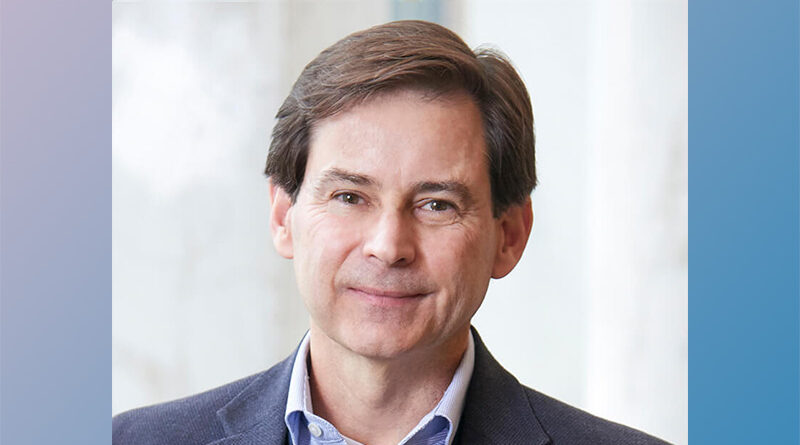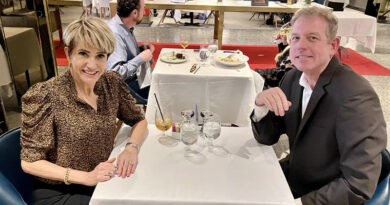Real Talk: Eurico Francisco
“Dallas is the largest American city without a school of architecture or design inside its city limits,” said Park Cities resident Eurico Francisco. Because of that, the Brazilian immigrant credits the Dallas Architecture Forum with filling the gap for the city when it comes to learning about architecture.
Francisco, who is vice president at Callison RTKL in Dallas, was named president of the forum’s board of directors in March.
How long have you been in architecture and design, and what led you to this career?
I have been practicing architecture for 35 years, which comes as a shock to me as I write it down. I’m still fascinated by it, and I feel that I learn something every time that there’s a new project or every time that I visit a new place. I am the first architect in a family of dentists and lawyers, and I credit my mother for pointing out architecture to me early on – I remember that she would always comment on buildings as she took me around the city as a young boy.
If you could go back in time and give yourself advice as you started your career, what would it be?
It would be: Your professors and mentors are ready to guide you through these early years – listen to them! It would also be: don’t worry so much about what comes next – just do your best work, and it will speak for itself (it always does, isn’t it true?)
Favorite building that you’ve been to?
It’s always hard to pick a favorite building, but there are a few that stay with you, that stay in your memory. There’s the building of the School of Architecture and Planning at the University of Sao Paulo, designed by Vilanova Artigas, mentor to my beloved professor Paulo Mendes da Rocha, himself a 2006 Pritzker Prize winner. The school is a tour-de-force in the use of cast-in-place concrete, and an original experiment in the organization of learning spaces. Closer to home, there are several notable buildings right here in Dallas – the geometrically rigorous Meyerson Center, the inventive Wyly Theater, the elegant Winspear Opera House, and the somewhat underrated Dallas Museum of Art, a timeless building that has anchored all the development on Flora Street and on adjacent blocks. And there is, of course, the magnificent Nasher Sculpture Center, also on Flora – a quiet masterpiece, not the largest building in the area, but so refined in its concept and execution. But of course there are great buildings beyond Sao Paulo and Dallas! Perhaps at the top of my list is a house designed by the late architect Paul Rudolph for Anne and Sid Bass in Fort Worth in the mid-1970s. I’ve had the chance to visit it a couple of times and it took my breath away – both times. The spatial experience is so rich and sophisticated, with multi-level volumes and dramatic cantilevers, unlike anything around. The estate of Anne Bass still owns it, and clearly takes pride in it, as the house is impeccably maintained.
What is a design trend you are excited about?
I’m excited not so much by a design trend per se, but by a social trend that is reflected in our urban environment: I’m speaking about the revitalization of our city centers, the renewed interest in historical downtowns, the return to city living and the mixture of uses that have been the hallmark of great cities – live, work and play, all interconnected. The pandemic has, of course, disrupted the trend, but I am confident that reinvestment in our cities will resume as we take control of the situation in the public health realm. If anything, the pandemic has only reinforced the notion that we miss being around other people, that we miss the energy of vibrant cities and all the opportunities that they offer. Telecommuting is convenient, and thank God for Zoom, but, in the end, we can’t forever live in virtual spaces.
What does The Dallas Architecture Forum mean to you?
The “Forum”, as we affectionately call it, plays a major role in the intellectual life of Dallas and in fact of the North Texas region. From its humble start over 20 years ago as a small group of like-minded architects, designers and art-patrons, it has evolved into a self-sustaining and professionally managed association with over 1,100 members today. Not only does the Forum promote lectures, tours, debates and symposia, it fills a gap as Dallas isn’t home to a school of architecture, as is the case of all American cities larger than Dallas. In fact, Dallas is the largest American city without a school of architecture or design inside its city limits. (We have the School of Architecture at UT Arlington, a jewel of a school, by the way, but it is still a good 30 minutes and several miles away from Dallas). With that, Dallas benefits immensely from the Forum, as it brings people together and fosters civic engagement.
Can you give us a couple of fun facts about yourself?
Ah, that’s not easy, but let me try. Fact one: Not sure that this is fun or even funny, but I’ve been in the US for more than half of my life but when I open my mouth people immediately can tell that I’m didn’t grow up here! I’ve tried and tried to lose the accent and sound more like a local, but by now I’m resigned to just live with it… Fact two: For a couple of decades, and to the chagrin of my fiancée and sons, I have been restoring a vintage 1960s two-seater convertible. I’ve missed a few deadlines – I first thought that the car would be ready by my youngest son’s middle school graduation, which then became high school graduation… Well, the kid is now in college, so my next deadline is his college graduation… But that car will look so good when it’s finally done – maybe it will ready in time to be the kid’s getaway car on his wedding day!
Click here for more Real Talk content

For nearly 40 years, People Newspapers has worked tirelessly to tell the stories—good, bad, and sublime—of our neighbors in the Park Cities and Preston Hollow. To support our efforts, please contact advertise@peoplenewspapers.comfor advertising opportunities. Please also consider sharing this story with your friends and social media followers.









